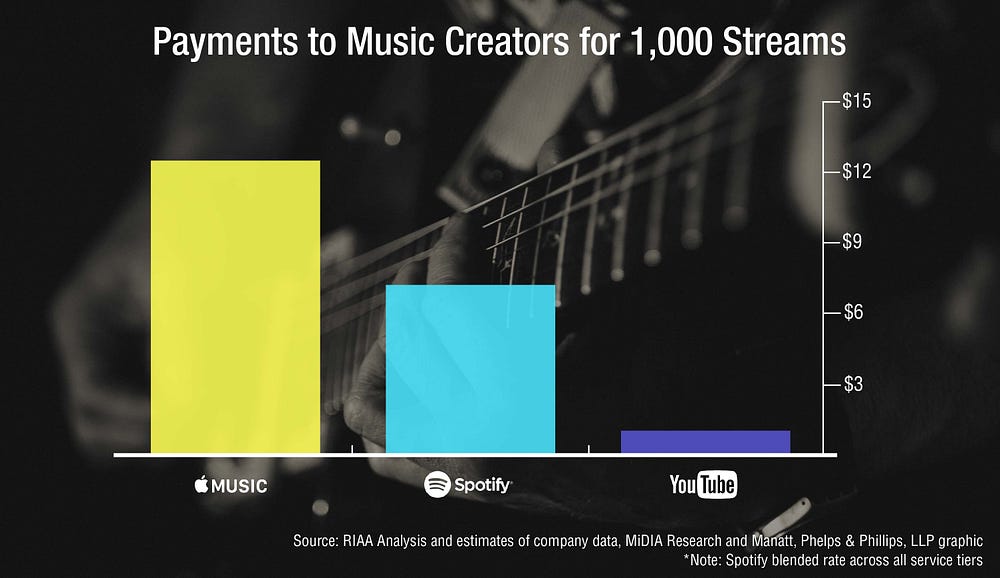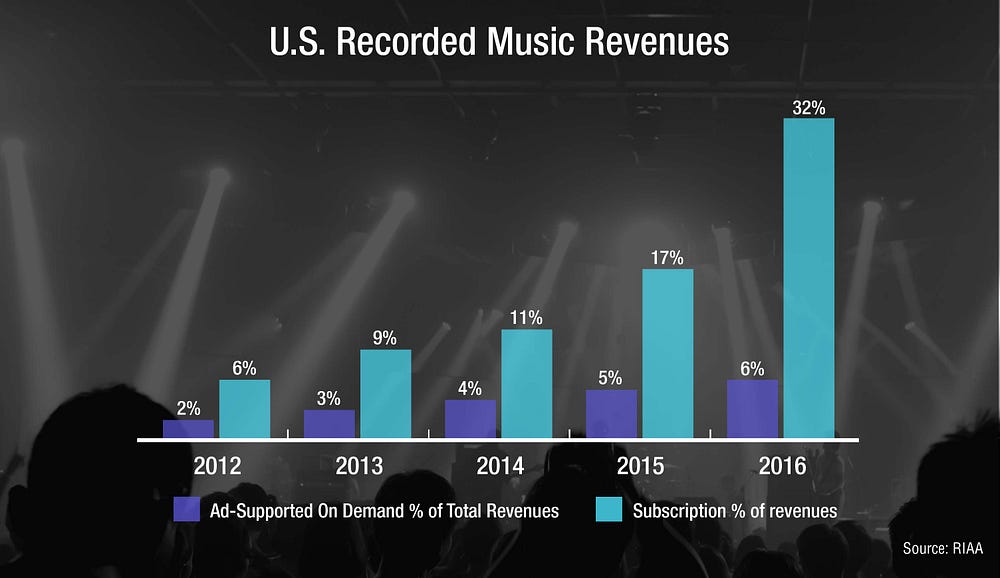News
August 18, 2017 | News Articles
Medium: Five Stubborn Truths About YouTube and The Value Gap
We are pleased that Lyor Cohen says he is making it his mission to direct some of YouTube’s revenues back to the music creators who drive its success. His optimism is encouraging. But to be honest, we’ve heard pretty much the same claims and arguments from YouTube before. So while Lyor’s heart may be in the right place, the numbers and YouTube’s actions tell a different story.
Let’s be real about what we know:
1. Google’s YouTube is the world’s biggest on-demand music service, with more than 1.5 billion logged-in monthly users. But it exploits a “safe harbor” in the law that was never intended for it, to avoid paying music creators fairly. This not only hurts musicians, it also jeopardizes music’s fragile recovery and gives YouTube an unfair competitive advantage that harms the digital marketplace and innovation.
2. Lyor claims the focus on this safe harbor is “a distraction,” but it’s YouTube that seems obsessed with this legal pretext, probably because it’s the safe harbor that enables YouTube to drive down payments to creators, inappropriately. The safe harbor was intended to protect passive Internet platforms with no knowledge of what its users are doing, not active music distributors like YouTube. As Lyor acknowledges in his blog, “the majority of music…is coming from [YouTube’s] recommendations, rather than people searching for what they want to listen to.”
It’s no mere “distraction” when YouTube uses the safe harbor to skew negotiations with music creators in its favor; to offer a below-market rate and say “take it or leave it,” knowing that by “leaving it” music creators will have to spend countless hours and resources sending takedown notices when they find unauthorized copy after copy of their music on YouTube, only to find them pop right back up again.
That’s precisely why dozens of music organizations and thousands of individual creators across the entire global music spectrum have banded together to protest the existing laws: www.valuethemusic.com Their concerns are real, their indignation is genuine. To dismiss that is to turn a deaf ear to an entire creative community.
3. The way that Google and YouTube frame it, you’d think that they are cash-starved start-ups just launching a subscription streaming business: but, in fact, these technology giants launched their Google Play service seven years ago. In that time, companies with far less resources have created licensed subscription services that have attracted tens of millions of paying subscribers.

Transparency? YouTube likes to talk a good game, but it won’t even make public its subscriber figures, and continues to underreport the number of music streams played on its service, let alone substantiate any of its many different claims about payments to music creators. In fact, every time they’re challenged on this point, Google and YouTube simply change their claims yet again.
4. About 400 digital services have been licensed around the world, many with ad-supported features. Comparatively, YouTube pays music creators far less than those services on both a per-stream and per-user basis, and nowhere near the $3 per thousand streams in the U.S. that Lyor claims.
Last year’s actual payout per 1,000 streams was closer to half that amount, according to industry data and Nielsen and BuzzAngle estimates, and seven times less than Spotify, which also is both an ad-supported and subscription service.

Lyor points to “developing markets” outside the U.S. to explain why YouTube isn’t paying enough. But YouTube’s monetization in developed countries, such as some of the biggest markets in Europe, is nothing to brag about.
It’s welcoming news that Lyor now believes that, at some point in the future, YouTube will “deliver fortune” to artists (a pleasant change from 2009, when he told Billboard that YouTube’s efforts to monetize content weren’t good enough). The history over that last decade is less encouraging, however: the contribution of platforms like YouTube to the overall business can only be described as meager.

5. We know music is important to YouTube. Nine out of the top 10 most watched videos on YouTube are music videos. According to data from research firm IPSOS, 82 percent of all YouTube visitors use it for music. And we also know that YouTube is an incredibly successful platform, recently hailed as a “bright spot” by Alphabet executives.
So the facts beg the questions: why is YouTube paying so little? Is this how a true partner values music? We don’t think so.
It’s long past time that the safe harbors — enacted 20 years ago, in the days of dial-up Internet, and before it was ever imagined that users could upload 400 hours of video to YouTube every minute — must be clarified to apply to passive and not active intermediaries. To be clear, we believe safe harbors should be preserved (and Google/YouTube claims that we’re trying to eliminate them is nothing but a red herring). But if safe harbors are to drive innovation and fair competition in today’s digital environment, they must be applied as originally intended, not as they are exploited by YouTube for its own competitive advantage.
Cary Sherman, Chairman & CEO, RIAA
